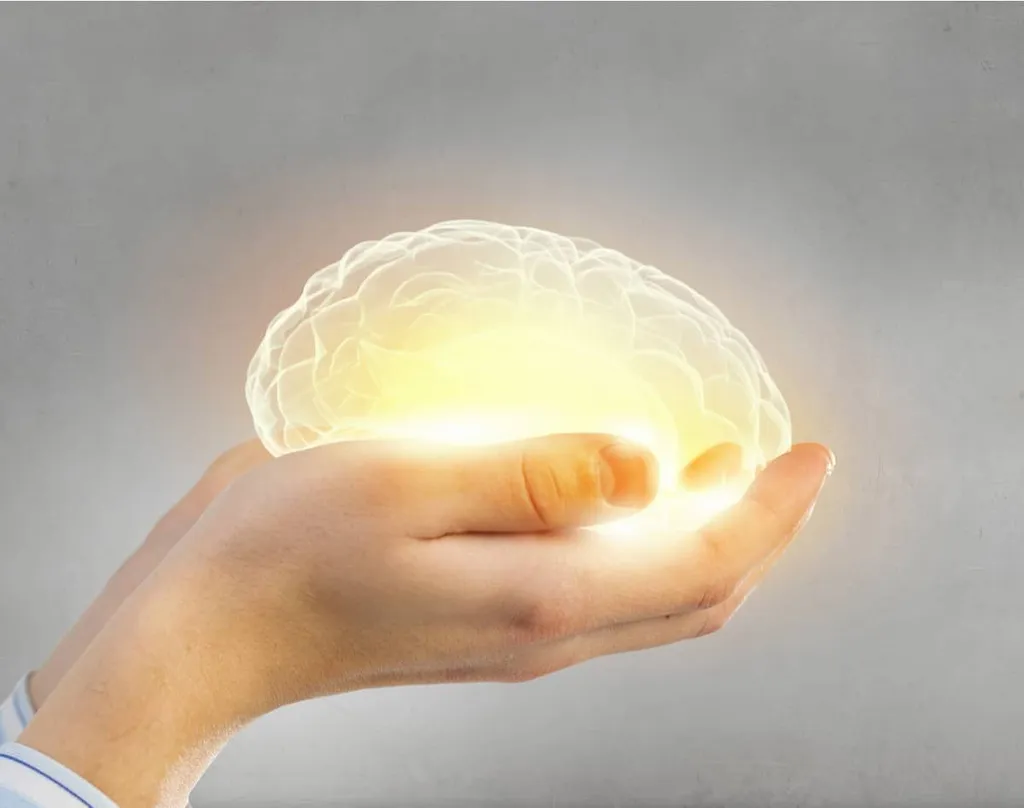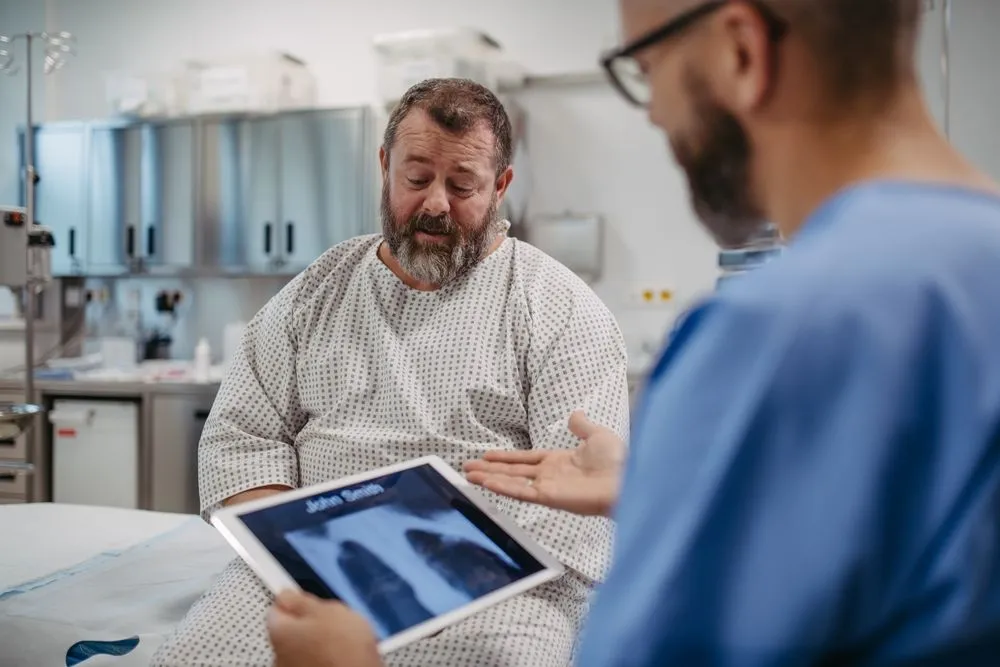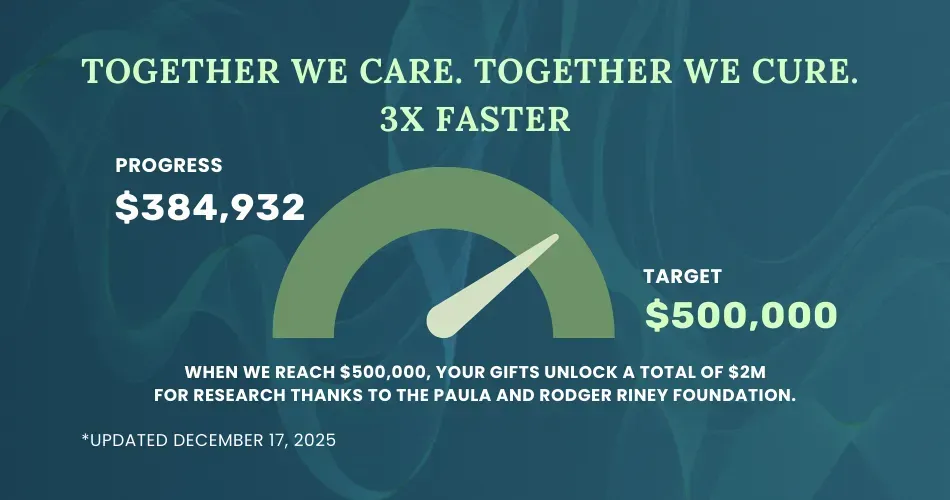Everything You Need to Know About DLBCL

Diagnosed with Diffuse Large B-cell lymphoma (DLBCL) or have questions about it? DLBCL is the most common type of aggressive lymphoma, and it's natural to have a lot of questions.
This article offers a clear picture of DLBCL through expert video interviews with hematologists. Watch as they break down everything you need to know – from causes and symptoms to treatment options and monitoring the disease. For a quick reference, a written summary of the key points covered in the video is included below. Let's navigate this together.
There are 3 main types of blood cancers: Leukemia, Myeloma, and Lymphoma. Diffuse Large B-Cell Lymphoma (DLBCL) is a type of non-Hodgkin lymphoma (NHL). It normally affects people over the age of 60 and is a very treatable condition. It occurs in approximately 30,000 adults each year in the United States.
- Patients can be cured.
- Chemotherapy is necessary, but only helps two-thirds of all patients.
- It is not just one disease. It is a category of diseases.
DLBCL is a cancer of the lymphocytes. These are a type of white blood cells that travel throughout the body and are necessary to fight infections. Over time, these lymphocytes may mutate and continue to multiply. Tumors can then form, beginning in the lymph nodes.
What Are the Signs And Symptoms of DLBCL?
Most commonly, enlarged lymph nodes appear in the neck, groin, or armpit. Abdominal pain may also occur (there are lymph nodes in the stomach). B symptoms can be present: fevers, weight loss, and night sweats.
Depending on the part of the body affected by DLBCL, symptoms may vary:
- Brain: Confusion.
- Lungs: Trouble breathing and chest pain.
- Kidney problems.
Symptoms may initially appear vague and mimic other illnesses, such as the flu. Imagining is necessary to detect any enlarged lymph nodes. A biopsy gives further evidence of disease specifics.
This cancer begins in the lymph nodes (which can be found all over the body). If left untreated, DLBCL will spread to other parts of the body: the bone marrow, kidneys, liver, spleen, or any other organ.
Is There a Cure for DLBCL?
This disease is one of the most curable malignancies. Approximately 60-70% of patients can be cured. Treatment generally lasts 5-6 months.
A small percentage (3-5%) can have complications: heart failure later in life, infections during or after treatment (because immune systems are compromised), bleeding, and kidney problems can occur but are rare.
Currently, the most promising treatment option is immunotherapy (such as CAR T-cell therapy).
How Quickly Does DLBCL Progress?
This is an aggressive cancer, meaning that it can grow rapidly. After diagnosis, treatment needs to begin quickly. Seeking a diagnosis as soon as possible offers the most success for therapy results. The earlier the diagnosis and treatment, the better the outcome.
There are 4 different stages of DLBCL:
- Stage 1- Located in a single lymph node or region.
- Stage 2- Located in two or more lymph nodes but on the same side of the diaphragm, the stomach, or groin.
- Stage 3- Located in lymph nodes in multiple areas of the body.
- Stage 4- The cancer has spread to organs or the bone marrow.
Stages 1 and 2 are considered early-stage disease, and treatment may be shortened. More than 50% of patients with Stage 3 or 4 are still cured.
About 40% of patients will relapse, but there are many therapies available for relapsed/refractory disease.
What Are DLBCL Treatment Options?
There are multiple options, but most are chemotherapy-based. The most commonly used is R-CHOP: Rituximab, chemotherapy medications, and prednisone. Other chemo-immunotherapy combinations are Pola-R-CHP and EPOCH-R, and doctors will choose the best option for each patient's disease.
Targeted therapies are very promising and offer more individualized care. Some examples are tafasitamab, polatuzumab, and CAR T-cell therapy.
For disease monitoring, a PET-CT scan (and maybe an MRI) is essential before setting up individualized treatment. Frequent scanning is usually not required once therapy is complete. Bone marrow biopsies may be required depending on the stage of disease or blood count.
Most treatments involve 4-6 cycles of chemotherapy. Long-term survivorship is dependent on the quality of lifestyle. Patients should seek treatment from a DLBCL specialist to receive the best care possible.
Continue Learning About DLBCL, Join HealthTree University
HealthTree University is the first online curriculum for patients to learn about DLBCL, as explained by experts. Gain exclusive access to the latest content as soon as it's available.
Diagnosed with Diffuse Large B-cell lymphoma (DLBCL) or have questions about it? DLBCL is the most common type of aggressive lymphoma, and it's natural to have a lot of questions.
This article offers a clear picture of DLBCL through expert video interviews with hematologists. Watch as they break down everything you need to know – from causes and symptoms to treatment options and monitoring the disease. For a quick reference, a written summary of the key points covered in the video is included below. Let's navigate this together.
There are 3 main types of blood cancers: Leukemia, Myeloma, and Lymphoma. Diffuse Large B-Cell Lymphoma (DLBCL) is a type of non-Hodgkin lymphoma (NHL). It normally affects people over the age of 60 and is a very treatable condition. It occurs in approximately 30,000 adults each year in the United States.
- Patients can be cured.
- Chemotherapy is necessary, but only helps two-thirds of all patients.
- It is not just one disease. It is a category of diseases.
DLBCL is a cancer of the lymphocytes. These are a type of white blood cells that travel throughout the body and are necessary to fight infections. Over time, these lymphocytes may mutate and continue to multiply. Tumors can then form, beginning in the lymph nodes.
What Are the Signs And Symptoms of DLBCL?
Most commonly, enlarged lymph nodes appear in the neck, groin, or armpit. Abdominal pain may also occur (there are lymph nodes in the stomach). B symptoms can be present: fevers, weight loss, and night sweats.
Depending on the part of the body affected by DLBCL, symptoms may vary:
- Brain: Confusion.
- Lungs: Trouble breathing and chest pain.
- Kidney problems.
Symptoms may initially appear vague and mimic other illnesses, such as the flu. Imagining is necessary to detect any enlarged lymph nodes. A biopsy gives further evidence of disease specifics.
This cancer begins in the lymph nodes (which can be found all over the body). If left untreated, DLBCL will spread to other parts of the body: the bone marrow, kidneys, liver, spleen, or any other organ.
Is There a Cure for DLBCL?
This disease is one of the most curable malignancies. Approximately 60-70% of patients can be cured. Treatment generally lasts 5-6 months.
A small percentage (3-5%) can have complications: heart failure later in life, infections during or after treatment (because immune systems are compromised), bleeding, and kidney problems can occur but are rare.
Currently, the most promising treatment option is immunotherapy (such as CAR T-cell therapy).
How Quickly Does DLBCL Progress?
This is an aggressive cancer, meaning that it can grow rapidly. After diagnosis, treatment needs to begin quickly. Seeking a diagnosis as soon as possible offers the most success for therapy results. The earlier the diagnosis and treatment, the better the outcome.
There are 4 different stages of DLBCL:
- Stage 1- Located in a single lymph node or region.
- Stage 2- Located in two or more lymph nodes but on the same side of the diaphragm, the stomach, or groin.
- Stage 3- Located in lymph nodes in multiple areas of the body.
- Stage 4- The cancer has spread to organs or the bone marrow.
Stages 1 and 2 are considered early-stage disease, and treatment may be shortened. More than 50% of patients with Stage 3 or 4 are still cured.
About 40% of patients will relapse, but there are many therapies available for relapsed/refractory disease.
What Are DLBCL Treatment Options?
There are multiple options, but most are chemotherapy-based. The most commonly used is R-CHOP: Rituximab, chemotherapy medications, and prednisone. Other chemo-immunotherapy combinations are Pola-R-CHP and EPOCH-R, and doctors will choose the best option for each patient's disease.
Targeted therapies are very promising and offer more individualized care. Some examples are tafasitamab, polatuzumab, and CAR T-cell therapy.
For disease monitoring, a PET-CT scan (and maybe an MRI) is essential before setting up individualized treatment. Frequent scanning is usually not required once therapy is complete. Bone marrow biopsies may be required depending on the stage of disease or blood count.
Most treatments involve 4-6 cycles of chemotherapy. Long-term survivorship is dependent on the quality of lifestyle. Patients should seek treatment from a DLBCL specialist to receive the best care possible.
Continue Learning About DLBCL, Join HealthTree University
HealthTree University is the first online curriculum for patients to learn about DLBCL, as explained by experts. Gain exclusive access to the latest content as soon as it's available.

about the author
Lisa Foster
Lisa Foster is a mom of 3 daughters and 1 perfect grandchild, a puzzle lover, writer and HealthTree advocate. She believes in the mission of the foundation and the team that builds it forward. She calls Houston, Texas home.
More on Core Education
Trending Articles
Get the Latest Large B Cell Lymphoma Updates, Delivered to You.
By subscribing to the HealthTree newsletter, you'll receive the latest research, treatment updates, and expert insights to help you navigate your health.
Together we care.
Together we cure.
3x Faster.










